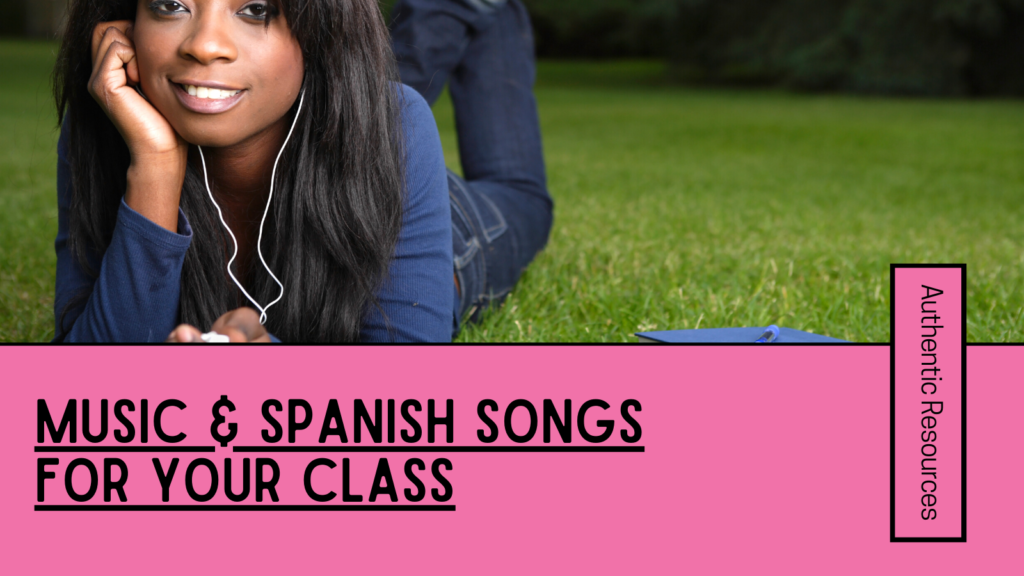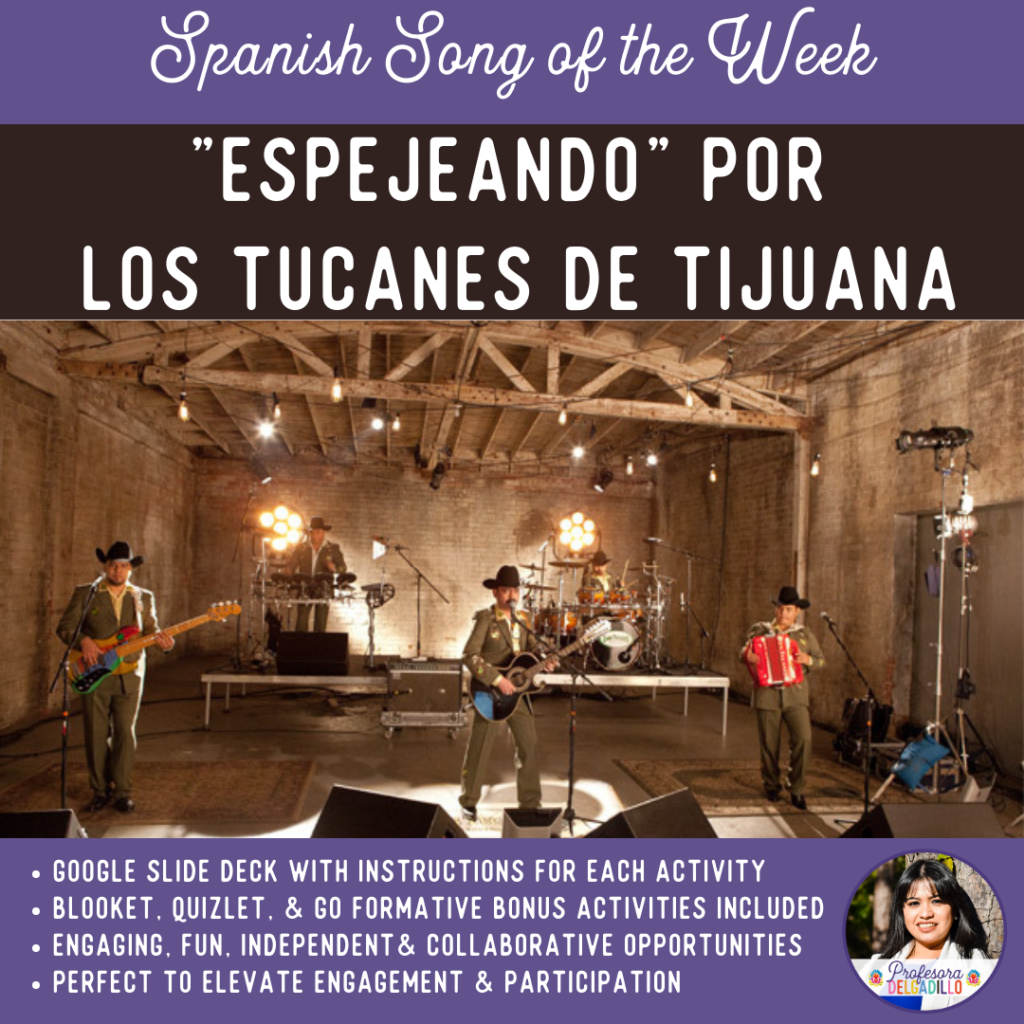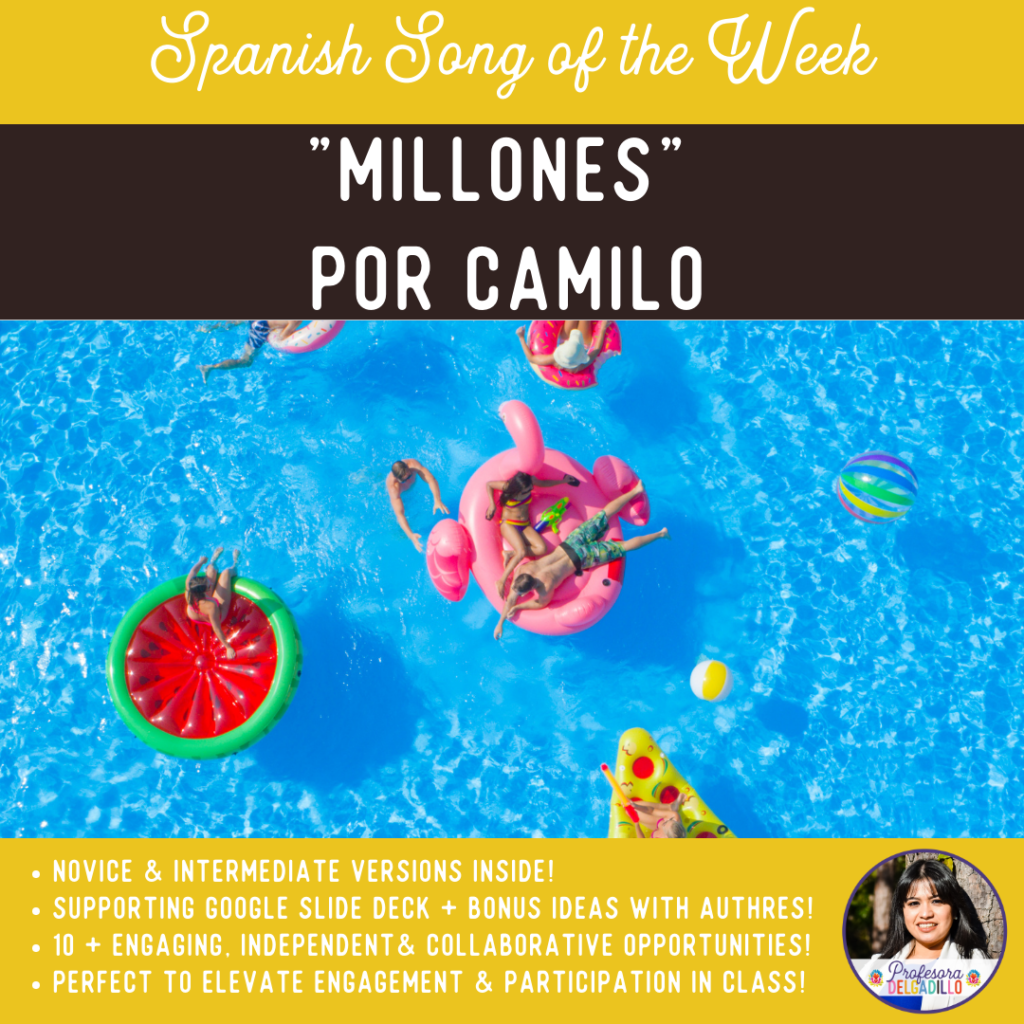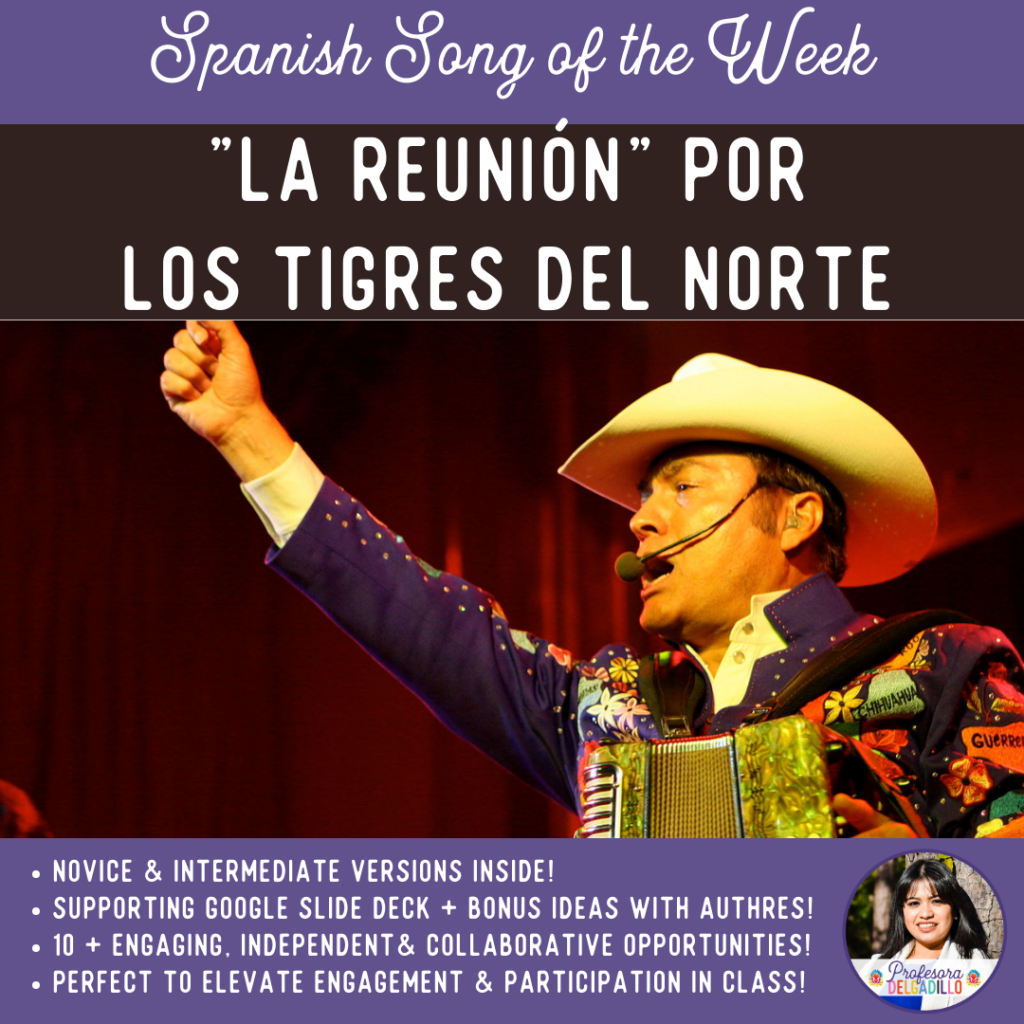One of my favorite forms of authentic resources to use in our Spanish classes is music. My students enjoy acquiring language through engaging Spanish songs for class. Music in general is a universal language, and it has the power to bring us closer as a class community.
Let’s Go Beyond the Cloze Activity
I promise I will mention cloze activities with Spanish songs for class later on in this same post. While I don’t dislike cloze activities, there are so many music activities for Spanish class that can be done conducive to a greater engagement & impact on learners. I am about to share some of my all time favorites.
I am so excited because I absolutely live (as in VIVIR, not a typo) the music from my culture with my learners. We love it! I want you to experience that same joy with your learners too if you aren’t already. Ready!?
1) Make a Strategic Spanish Song Selection
When selecting a Spanish song for class, I search for songs that have strong cultural components. Either, I may select songs that include certain vocabulary that will aid a unit I am already doing. Or even occasionally I simply select songs that are catchy and will be stuck on my learners’ heads just for the joy of connecting them to the plethora of artists from the target culture.
2) Introduce the Artist
Songs in Spanish provide us with the opportunity to make stronger connections with the countries where the artists are from. Not only that, when introducing an artist, we can talk about a lot of things. We can talk about their age, where they are from, awards they have received… Also, collaborations they have done with other artists (many times connecting to artists in the US), and philanthropic projects in which the artist may be involved, etc.
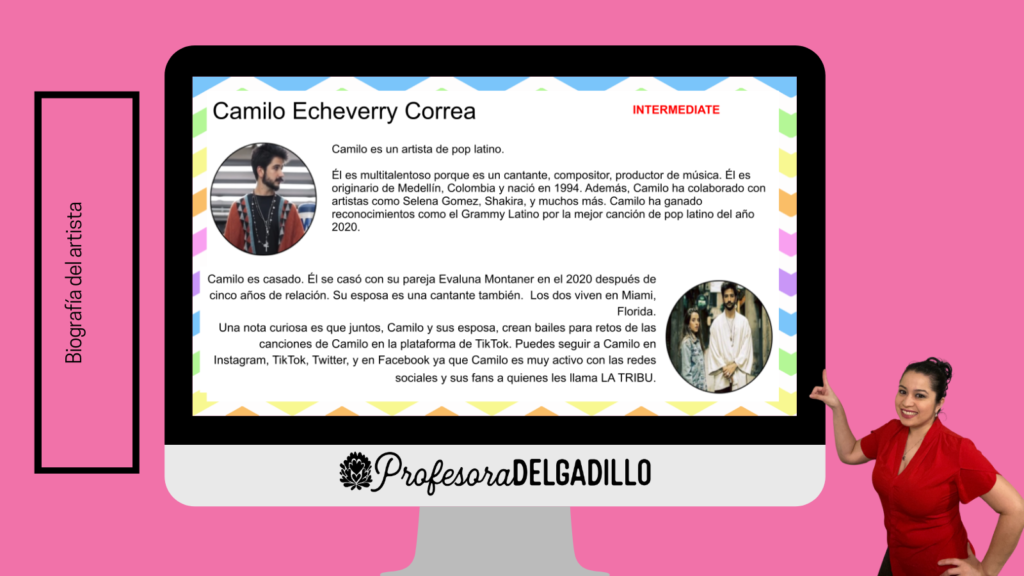
Students can read about this information or they can do their own research to create their own artist bios. I particularly love doing comprehensible map talks –Talking about a map and specific locations in a way students can understand -. This is something I learned about at my first IFLT conference back in 2017 when I am introducing artists. I do the best that I can to build strong interest in a particular artist. Then, I proceed to play games or ask my learners questions about the artist.
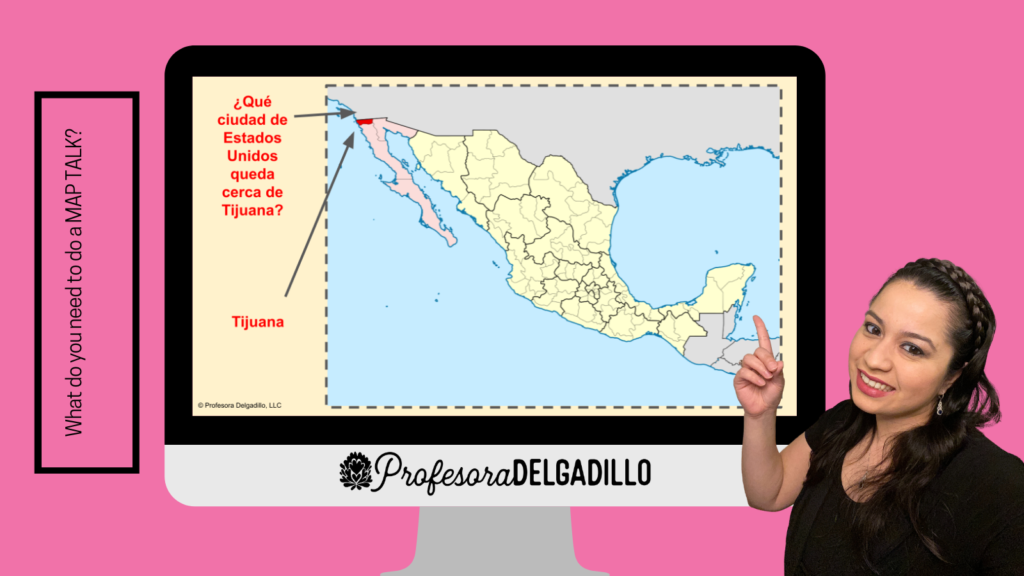
3 )Preload Useful Vocabulary & Peak Interest with Comprehensible Input
Once I have introduced the artist, now we are ready to communicate using specific words that I may want to highlight in a song. For example, in the song, “Espejeando” by Los Tucanes de Tijuana, I asked the following questions prior to even playing the song. And, so that my students could really engage, I provided all the language necessary for them to put respond with as much detail as possible.
I wanted my students to make their own connections to these words prior to even seeing them in the song. I usually extend this activity as long as my students are engaged.
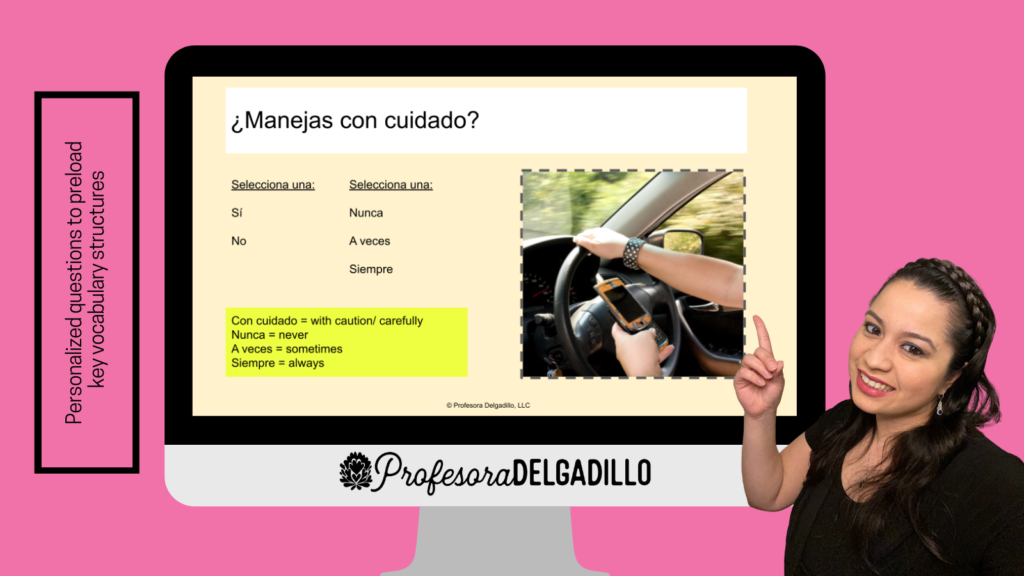
4)Select activities for a variety of communication modes
While I usually focus heavily on the interpretive mode when it comes to songs, it is important to create learning progressions. They provide learners opportunities to play and acquire the language through the songs.
Some of my favorite activities are the following
- Give learners a word cloud with words from the Spanish song for class and play the song. Have the learners in pairs race each other to point to the word and mark it as they listen. I learned about this activity from Annabelle Williamson aka La Maestra Loca.
- Put different verses out of order on a document and have students put them back in order.
- When the video has cultural content, have learners identify products, practices, and perspectives and connect to their own.
- If the video has an SEL lesson, provide an opportunity to bring more self awareness or to build relationships, etc.
- Always fun: Have learners create Tik Tok videos dancing to a clip of the song or lip syncing to it.
The list does go on!!!!
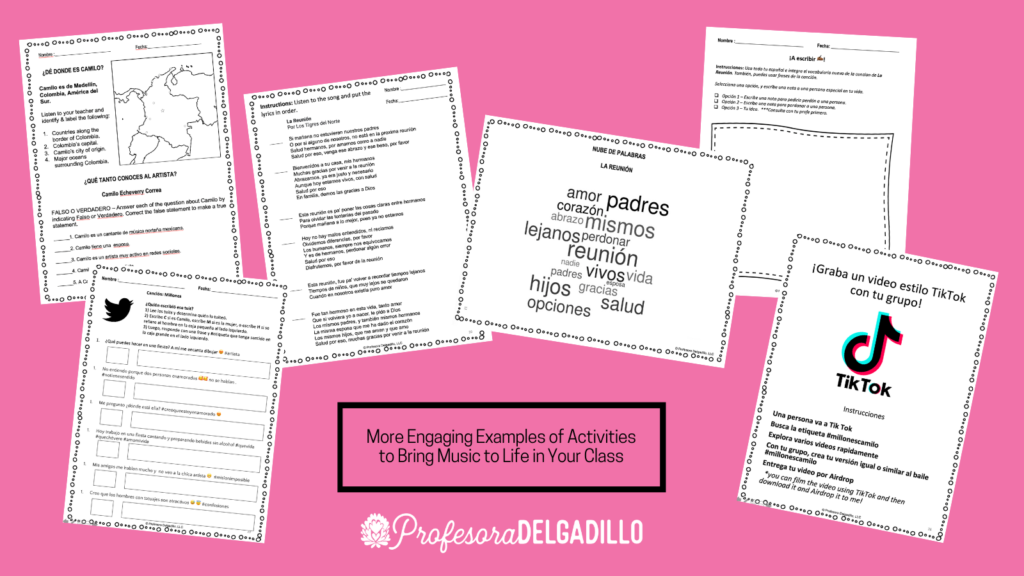
5) What About the Cloze Activity ?
I only use the cloze to provide students an opportunity to listen to the song several times, but I can do the same using other activities. In fact, I don’t ever give them a grade for a cloze activity. I allow them to keep that lyric sheet so we can sing and do more with the song such as the activities I explained above.
Another way I integrate the cloze activity is by giving my learners the cloze in Spanish with English translations so that way they can read over the entire song and really know what they are singing. In class, I may only focus on the chorus or only on specific verses, very seldom I focus on the entire song, but I still want my learners to know what they are singing about, and they want to know too. It is amazing how each student will connect with a song so differently.
You could also explore the songs I have already successfully done with my learners, to do so visit my Tpt store Profesora Delgadillo, or click each of the pictures below.
To learn more with me, I invite you to join me on Instagram and watch the replay of Bringing Joy to the Classroom with Songs as Authentic Resources.
In my next blog post, I will be sharing the top mistakes I made when teaching with songs early in my career. I look forward to sharing more with you in the next couple of days.

